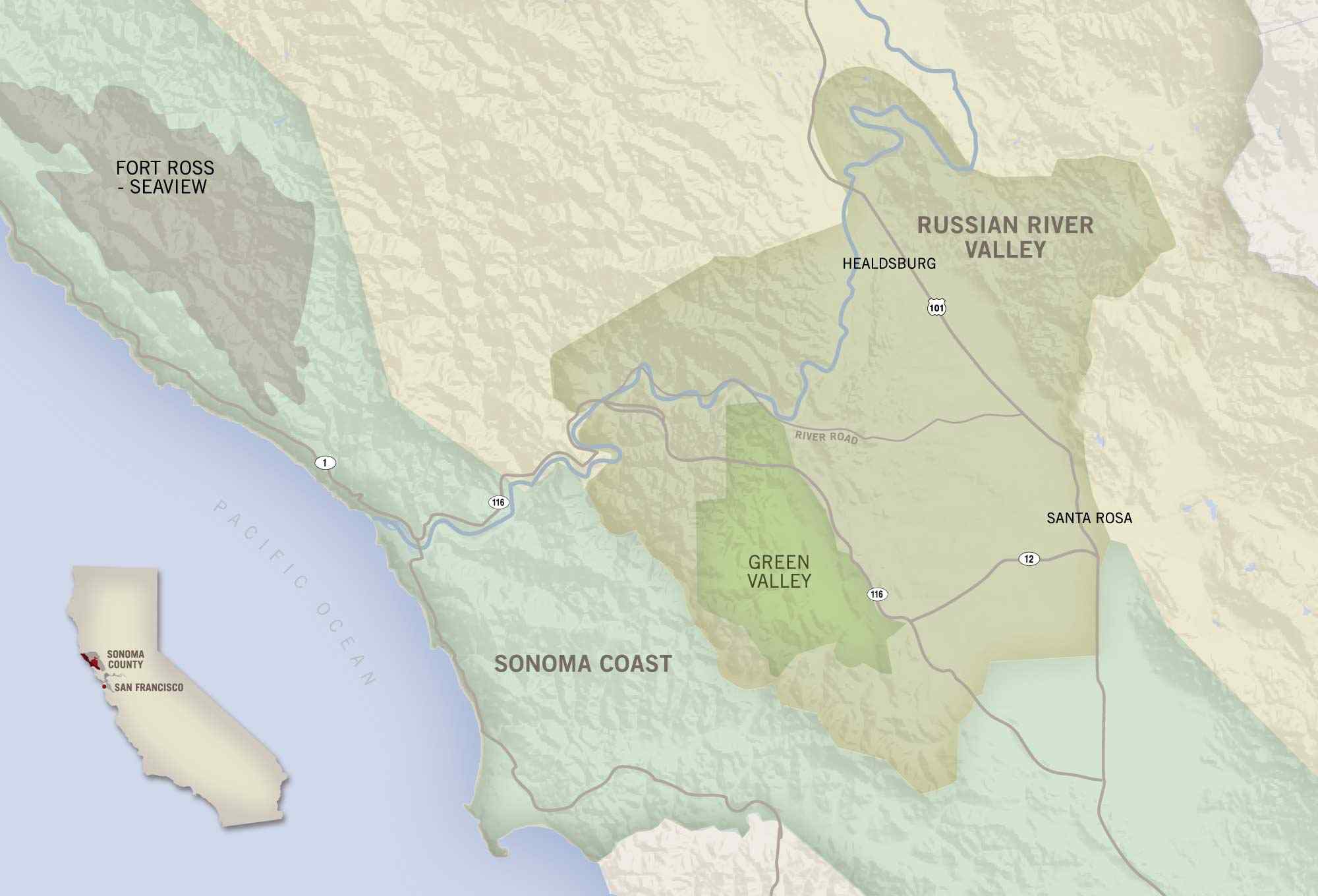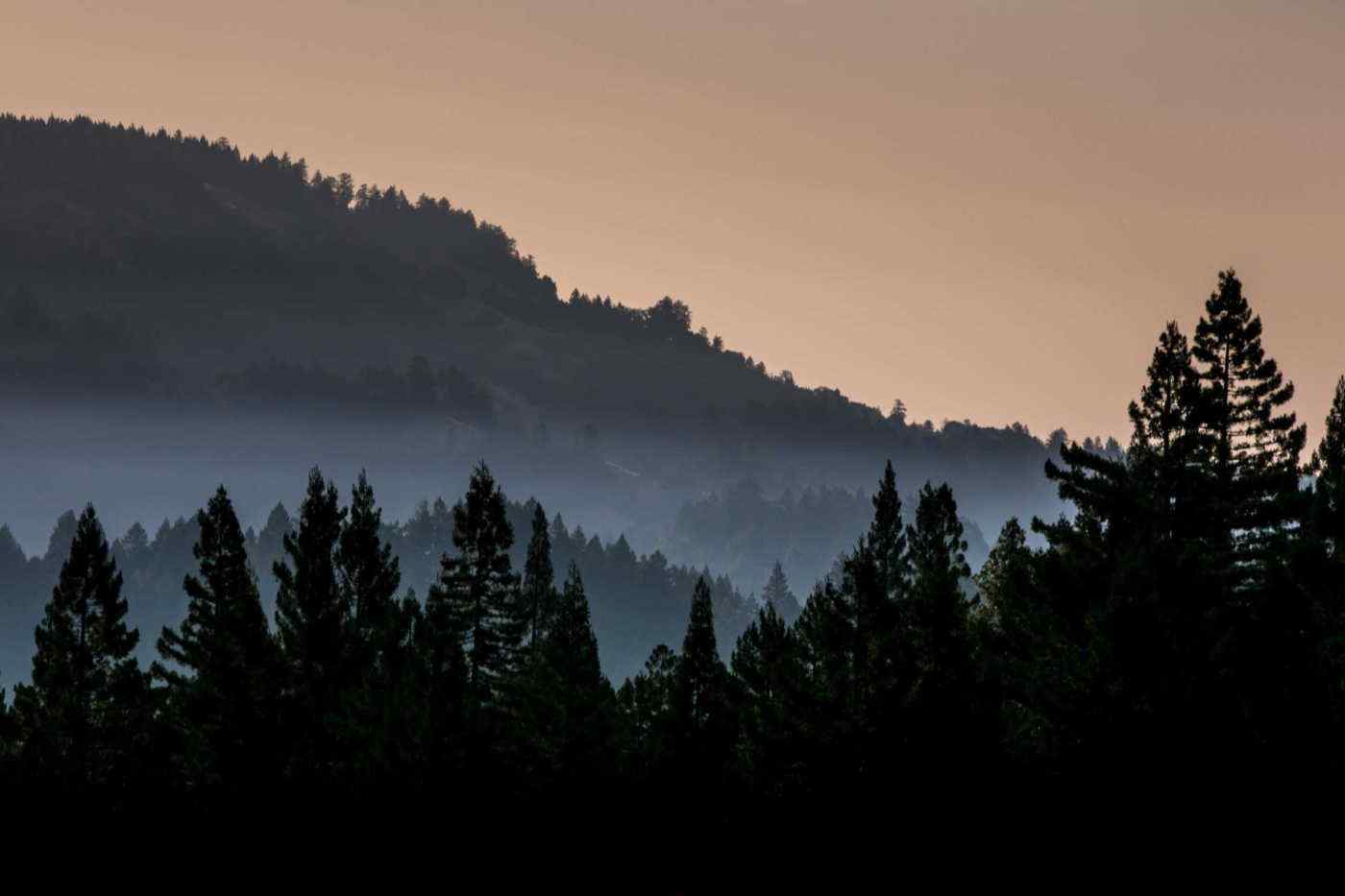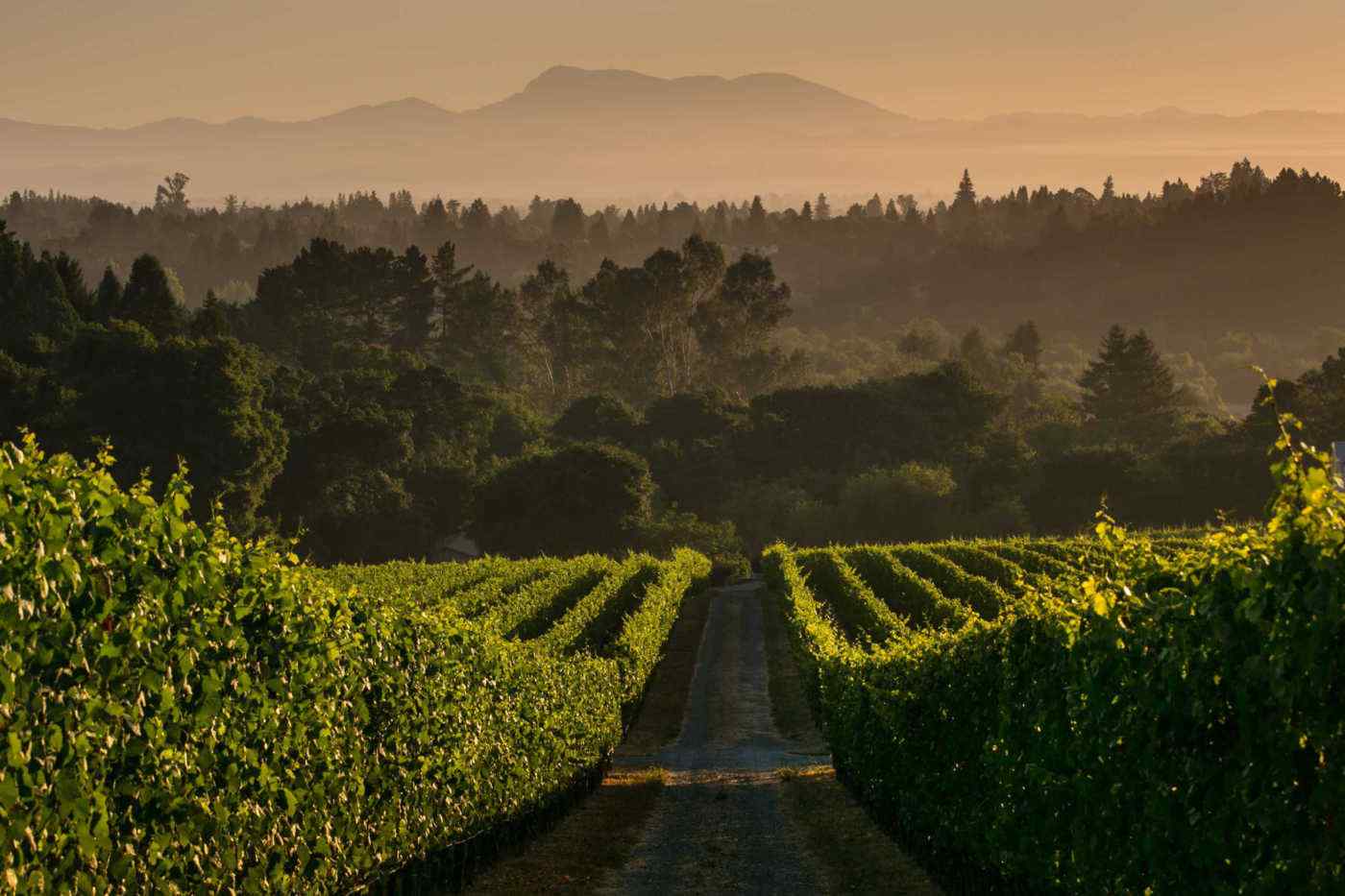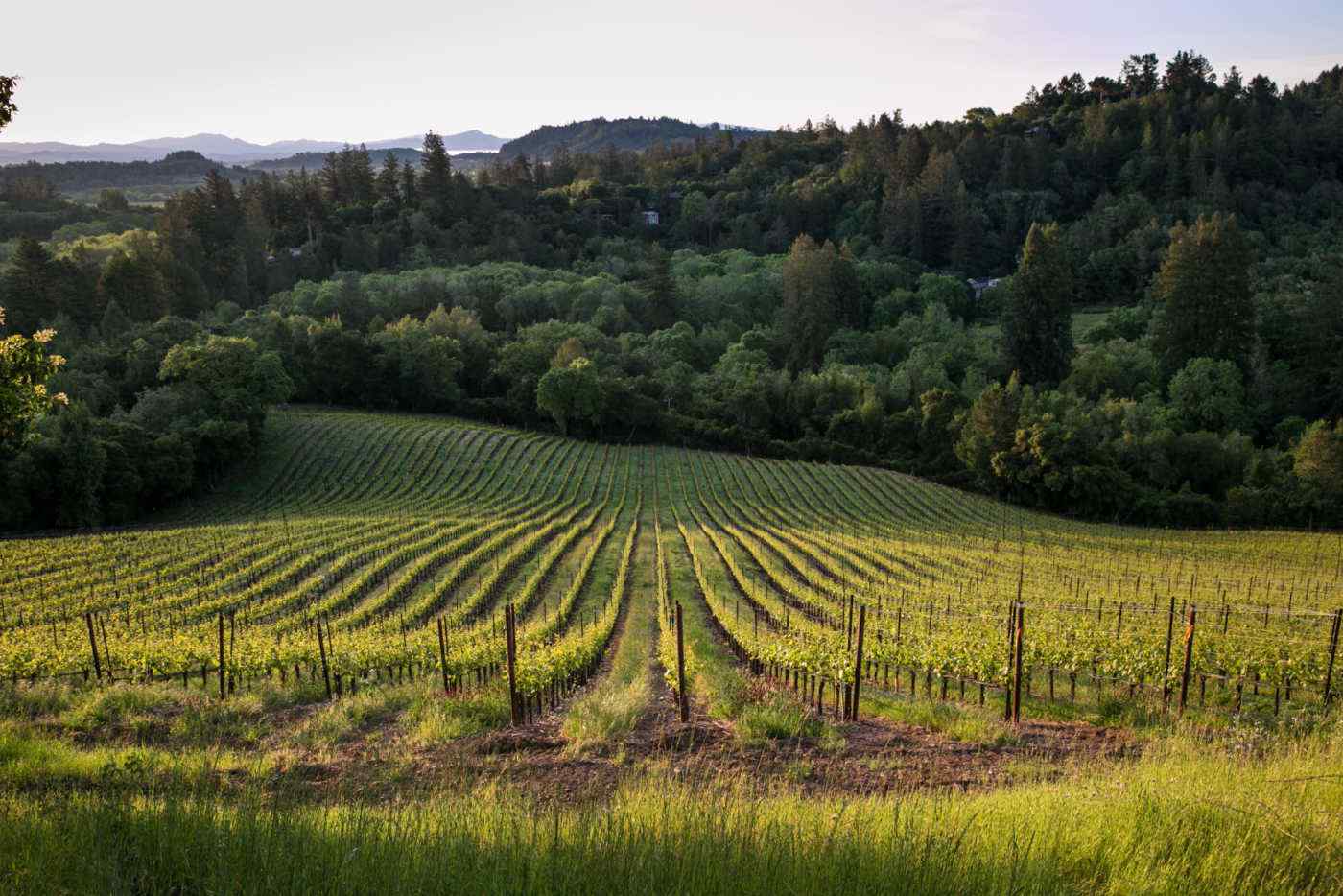Russian River Valley
It’s fitting that the Russian River Valley AVA lies at the geographical heart of Sonoma County. This is where some of wine country’s best known and most beloved varietals really earned their reputation. This is the AVA best known for its world class Pinot Noirs and Chardonnays, while remaining home to sought-after old vine Zinfandel. The Russian River Valley earned American Viticultural Area status in 1983, and currently comprises 15,000 vineyard acres.

The Russian Influence
The valley is named for the first non-natives to settle in Sonoma County. The Russians, who settled along the Sonoma Coast at historic Fort Ross from 1812 to 1841, left a significant impact on the area. They found this region optimal to hunt sea otters for their furs providing food and staples for Russian colonies in Alaska. Agriculture, including viticulture, was a primary goal of these endeavors and the fertile soils of the Russian River Valley provided a region apt for farming and sustaining their outposts.
During the 1830’s, the Russian settlers ventured southeast from Fort Ross in search of more temperate agricultural regions. Outposts were established in the areas of Sebastopol, Graton and Freestone. Wine grapes planted at Fort Ross on the Sonoma coast, and subsequent vineyards started by the settlers throughout Sonoma County, took place well before the Gold Rush of 1849. Although we don’t know exactly when the Russians first planted grape vines or if wine was actually produced from these plantings, we now believe those early plantings at Fort Ross were the first in Sonoma County. The Russians eventually abandoned their foothold in Northern California around 1841. The migration of subsequent settlers, many from wine-producing European countries, continued to develop this initial viticultural venture, establishing the foundation for what would become a flourishing industry within the Russian River Valley.
By 1876 viticulture was well established in the Russian River Valley. It is recorded that the region produced in excess of 500,000 gallons of wine, with about 7,000 vine acres planted.
Prohibition in the RRV
During Prohibition, the Russian River Valley saw drastic changes and an overall decline in wine production. Many of the wineries that surfaced during the late 1800s and early 1900s did not survive the severe restrictions placed on all alcohol production and consumption. From 1920 to1933 wine production was severely limited, forcing many wineries out of business. Those who wanted to continue to make wine legally were forced to produce only 200 gallons of non-intoxicating cider or fruit juice per year for household use; though some were brazen enough to disregard the production regulation. Prohibition ended in 1933 with the repeal of the 18th Amendment; however, by then less than 50 wineries remained within Sonoma County.
Top Grapes
Chardonnay (41%), Pinot Noir (29%) and Zinfandel (9%) are the top plantings in this AVA. Merlot (5%), Cabernet Sauvignon (4%), and Sauvignon Blanc (4%) are next in acreage, but the small amount of cool-climate Syrah (2%) produced here may get more attention among wine collectors.
The Lay of the Land
The Russian River Valley AVA does not strictly outline the path of the Russian River, which flows from Mendocino County south-by-southeast through Alexander Valley. Then the river makes an abrupt left at Healdsburg and cuts west through rugged terrain all the way to the Pacific Ocean. Rather like a heart in its shape, roughly 15 miles wide and tall, the AVA occupies a “sweet spot” that’s cool, but not too cold.
In the growing season, warm daytime temperatures plummet when fog regularly intrudes from the Petaluma Gap to the south, and the Russian River to the west. The northern border marks the point where the fog frequently sticks around a while longer in the morning, while Alexander Valley to the north east is already heating up.
In the late afternoon, a fog bank can often be seen hovering above the appellation’s border in the hills west of Sebastopol. The eastern border arbitrarily runs through downtown Santa Rosa, two miles from the Bennett Valley AVA, which is actually considered by some to be colder still.
Soils of the RRV
The geologic history of the Russian River Valley is both active and recent. The collision between the North American and Pacific tectonic plates caused the uplift of ancient bedrock, which then eroded. Within the last few million years the eruption of volcanic vents immediately to the east resulted in the deposition of volcanic ash on the shallow ocean bottom. The resulting sandstone gave us our famous Goldridge loam soil. Water flowing off of the Sonoma Mountain range carried with it eroded volcanic material, creating soils with large amounts of clay in the central portion of the appellation. Then, in what remains a major mystery to geologists, the Russian River, which once flowed south to what is now San Francisco Bay, changed course and headed west through the coastal foothills. Along its course it deposited large amounts of alluvial materials that are now river bench lands. Each of these different soils has a profound effect on wine produced from grapes grown in this soil.


